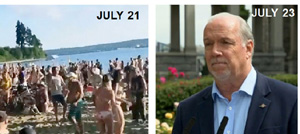
Thursday July 23, 2020 ~ VICTORIA, BC
Editorial Analysis by Mary P Brooke ~ West Shore Voice News
Top-level political messaging with the required pizzazz started to emerge today about the dangers of spreading the COVID-19 viral infection through reckless behaviour.
This comes in response to recently seeing large gatherings of people in parks and on beaches where there was clearly no adherence to physical distancing and little to no wearing of masks among people in close proximity to one another.
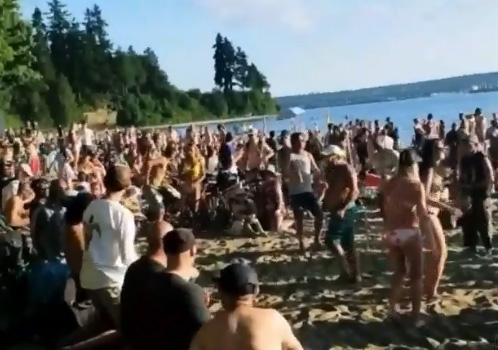
Now about 1,000 people are in self-isolation for 14 days as a result of contact with people who didn’t adhere to physical distancing and ultimately spread the virus.
Physical distancing by a two-meter distance from everyone who is outside your household or social bubble (and staying home quarantine-style in the extreme) during the COVID-19 pandemic has been the key contributing factor of success in flattening the curve.
Individuals, families, schools, businesses and entire economic sectors have paid huge prices in many ways and on many levels (including challenges to mental well-being, financial stability, educational continuity and family cohesion) to keep the spread of COVID-19 to very low levels. So far, BC has been admired across Canada and worldwide for this achievement.
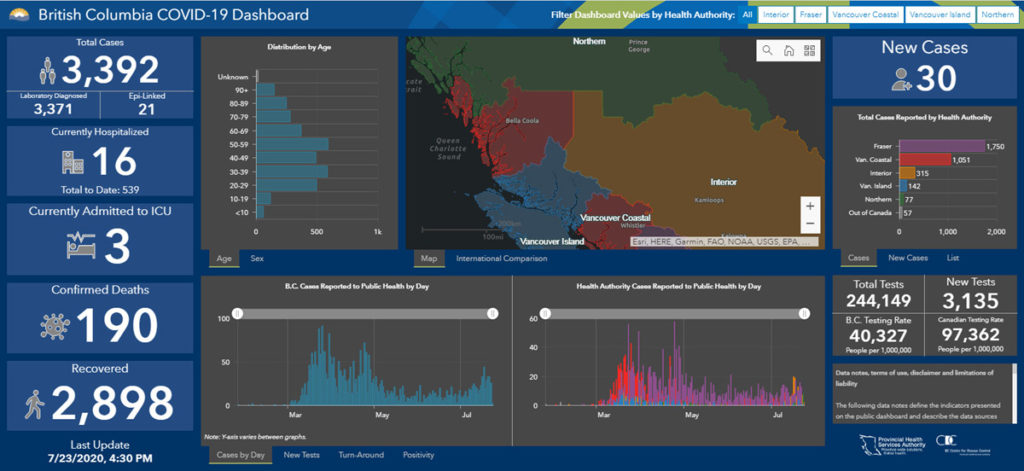
But this week there is worry, as the average daily case count averages between 30 and 34, and more young people are contracting the COVID-19 viral disease. Today’s 30 new cases brings the BC-wide total of test-positive cases to 3,392 with 16 of those in hospital (three in ICU).
Getting earthy with the messaging:
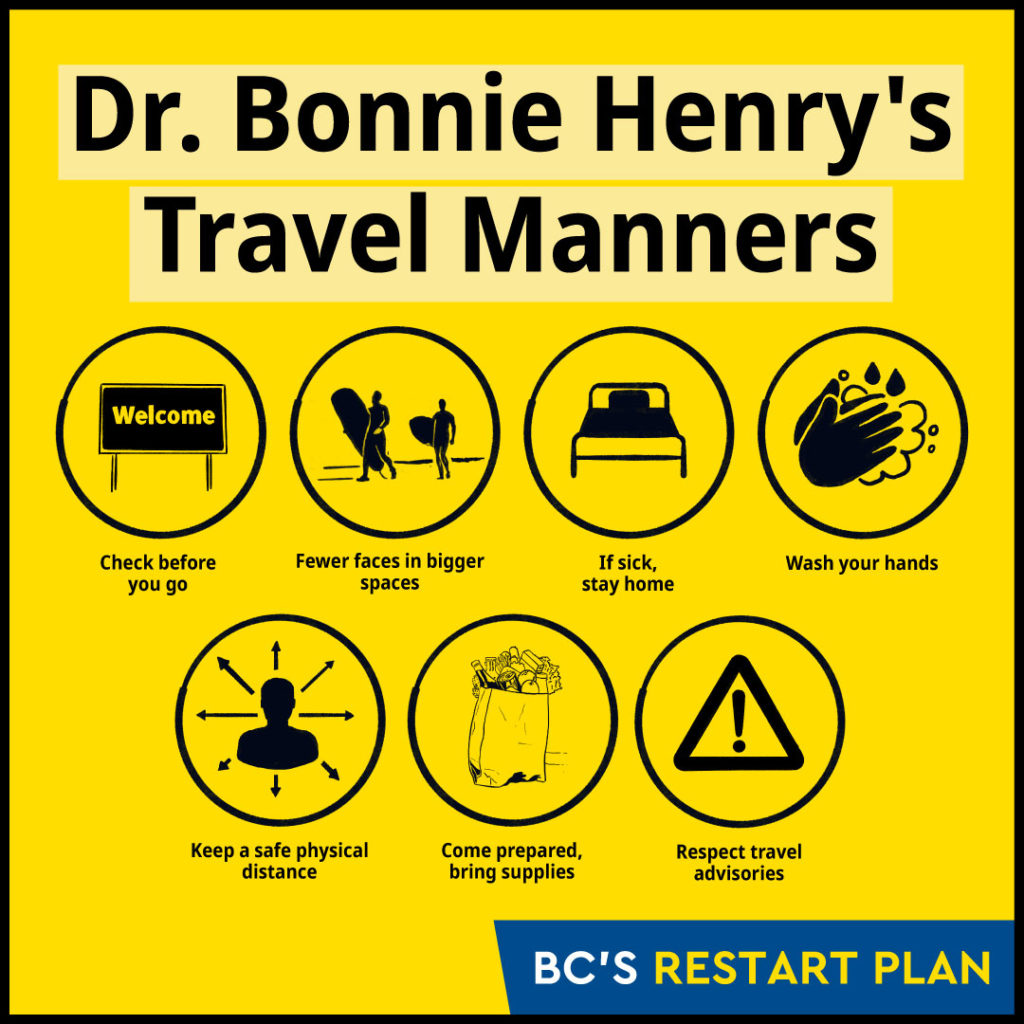
Perhaps now it takes something a little more in the vernacular, like: “People, it’s time to get with the program. If you are not physical distancing and following all the other public health orders then you are part of the problem.”
It also takes realizing that all the pamphlets, websites, info graphics and social media posts by government will not reach a certain segment of the population. That’s the segment (variable as to who, depending on issue or circumstance) that breaks and bends rules, or is not in a possible to adhere to rules even if they want to (due to financial or social circumstances). How many decades has it been that we’re still reminding thoughtless and reckless people to not drink and drive?
Today Premier Horgan politely lowered the boom on those who have been flagrantly disregarding the physical distancing and mask-wearing that will help BC continue to see a flattened #COVID curve. “C’mon you’re better than that. Bigger spaces, fewer faces.”
Taking it further, including youth:
But that sort of chummy approach ‘between pals’ may still not be enough. For the first few months of the pandemic the BC public health appeal was about protecting elders (given public health awareness of obvious challenges in long term care) and now focusing a lot of the messaging on helping businesses during the Restart, with almost no direct messaging to youth.
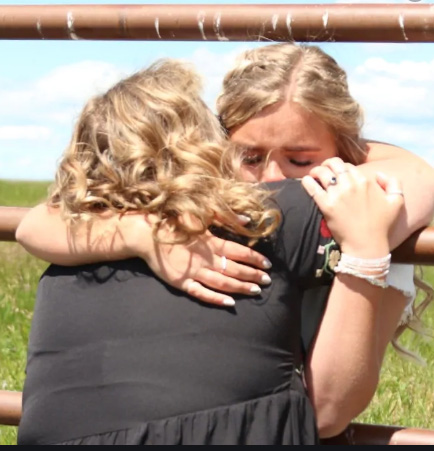
Youth have not only had their lives turned upside down in some ways that are irreparable (timing for heading to university, or into a relationship or marriage, or having invested in new business the doors of which were suddenly shut) but the over-emphasis on the well-being of elders was (no matter how medically necessary or well-intentioned that was) was simply void of any messaging that would motivate young people whose lives were affected in ways other than caring about senior relatives in their lives.
And when it came time for the restart, it’s unlikely that most youth — who had just lost a job or an opportunity for post secondary or that chance to find a summer date — have ‘heard’ much in the messaging that has focussed on how well the Public Health Officer or WorkSafeBC has been doing at machinating the details of guidelines.
Paying the price for missing the youth-beat:
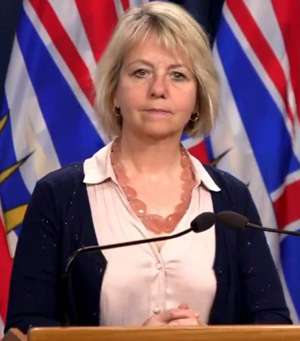
Simply, BC public health messaging until very recently was devoid of attention to youth, and we may all be paying the price for that now.
Dr Henry has mentioned and referred to, a few times, about ‘the young people in her life’. But like any age group there is a spectrum. Not all youth are adequately educated, financed or supported by family circumstances. Not all youth have doors open easily to them in social ways or for employment. Not all youth have connections in mainstream society. The Z-Generation was already feeling heavily disenfranchised, and they are now — through their disregard of COVID restrictions and in reaction to their losses — lashing out.
There is an element of anger in the recklessness displayed by young adults who are certainly intelligent and informed enough to know how serious the COVID-19 pandemic is. It’s time for people on the inside of government to dip their toe into the headspace and lingo of the many worlds and realities that the rest of us live in and deal with in sometimes difficult ways.
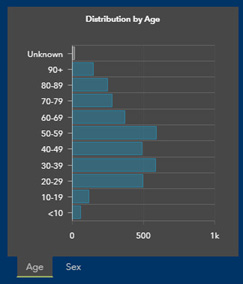
Yes, most youth feel invincible — their whole lives lie ahead and most of them are physically healthy and mentally and emotionally fit to take on the world. COVID-19 has smashed that reality in face for youth in 2020.
Acting out against what has probably felt like huge oversight or even neglect in public health messaging has fueled by the sheer frustration of young people whose lives are now constrained socially and economically.
“It is hard to put your life on hold, but we need young people’s energy, to take control of our society and our future, which includes fighting COVID-19,” said World Health Organization Emergencies Program Executive Director Dr Mike Ryan, this week.
The case count (July 23) in the 10-19 year age group is presently 115, with the 20-29 year age group showing 497, and now 582 cases in the 30-39 year age group.
Getting organized to deliver motivational words:
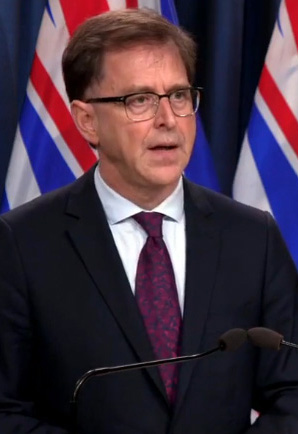
No disrespect intended, but it’s time for career professionals to step outside their comfort zone and wrestle directly with this beast called societal management of COVID-19.
Obviously, it’s absolutely great that politicians have been heeding public health guidance explicitly (as Health Minister Adrian Dix put it today) and of course paying attention to economic supports for individuals, families, businesses and various industry sectors in this time of crisis (most ably led by Finance Minister Carole James). All of that well done.
It might have seemed like a good idea in an office meeting, but pitching to young people to be the social media workhorses for BC public health is a ‘lame’ idea, as the kids say. But even the Z-Generation knows the difference between the online realm of social media and 3D reality. All the funky social media messaging in the world won’t get through to people who are already in pain from their lived reality and acting out in response to the containment of recent months, or their sheer lifestyle bias against social responsibility.
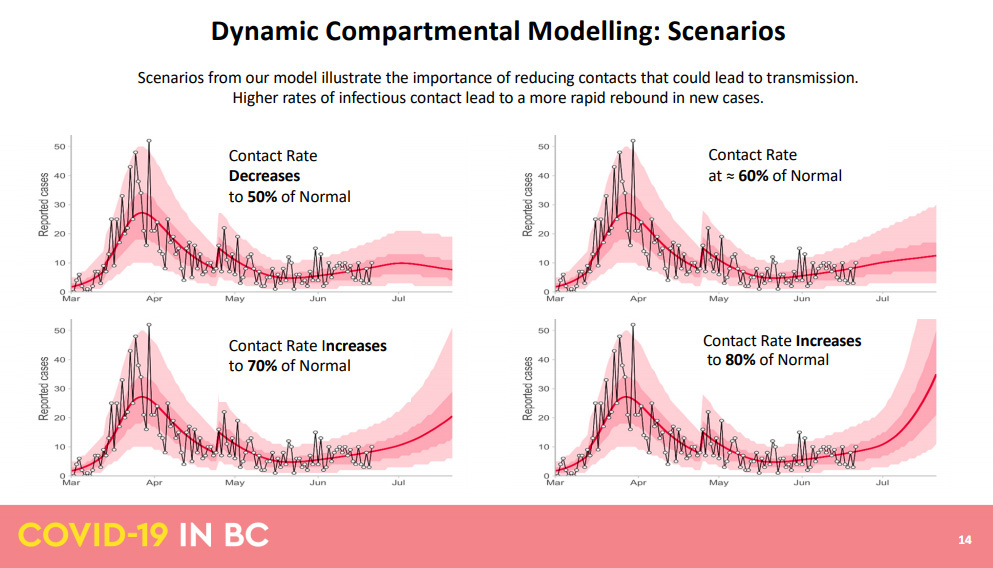
Dr Henry’s calm, methodical, educational approach has definitely worked to keep the curve flattened by all those who were inclined to pay attention. Her approach helped BC maintain activity below 50% of normal activity in the early days of the pandemic. Now the activity level is hovering around 70% to 75%, which allows for an uptick in cases. so now it’s time to think of ways to effectively reach any groups — presently mostly young adults it seems — that need to be brought into the fold of COVID safety.
Time for a mix:
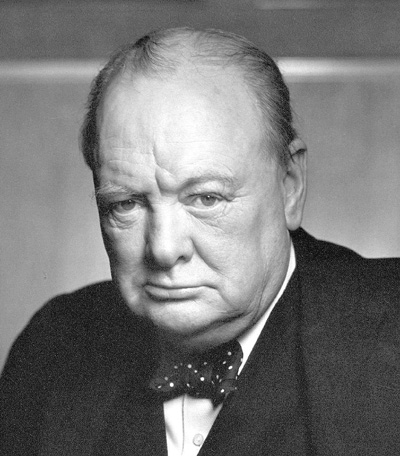
It’s time for a mix … of science, politics and some good old-fashioned Churchill-style motivational messaging to help carry British Columbians safely through the next wave of the pandemic. A bit of fire in the belly is what some British Columbians are hoping to hear right now, even if they are already complying with public health orders. That sort of approach helps sustain confidence.
This call for more ‘oomph’ has been heard in various media questions to the Premier, Health Minister and Public Health Officer in BC over recent weeks and months. It is the job of media to sense what the community is feeling and then articulate that in effective questions to elected or appointed leaders.
It’s time to get past the educational approach about how to contain, restrain and adapt our personal physical behaviours. It’s time to start illustrating as to how society and the economy could be a whole lot worse if we lose our grip on a flattened curve. It’s time to paint darker pictures, without depressing people. That takes the highest and best of political skill, backed up by effective speechwriters.
As Churchill so ably demonstrated during World War II, sometimes all his nation had left against what seemed like an insurmountable enemy was the power of words.

Health Minister Dix had some good phrases that popped out of his statistical and political statements in the last week or so, including: “Indecision is the acquaintance of COVID-19, inconsistency is its friend, and bad decisions are its closest ally. COVID-19 finds those gaps and pounces. It makes people sick. Stop the spread.” And this clever turn of phrase using social media lingo: “Unfriend that behaviour that spreads COVID-19.”
Going light on enforcement and fines:
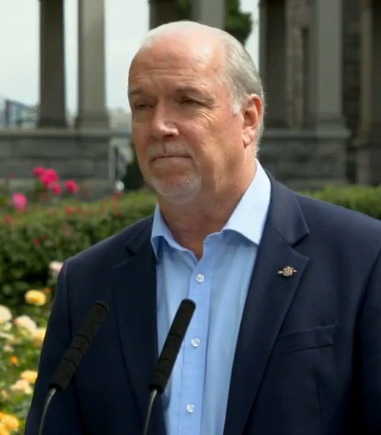
As Premier Horgan pointed out today while addressing media in the BC Legislature’s Rose Garden, some jurisdictions tried using bylaw enforcement and fines in the early phases of the COVID-19 pandemic but that BC has not taken that approach overall. The measured, science-based approach has worked well until now and it should continue in standard public health messaging.
But for rallying the people through a tough time ahead, it will take the imaginative expression of complex thoughts in clear and concise phrases. It is the role of political leaders to deliver this type of messaging. it is needed now.
This is a time of war, something we are all just starting to adjust to the concept of. The COVID virus enemy is unseen but it is everywhere. As Minister Adrian Dix put it lately, COVID is ‘ready to pounce’ when we let down our guard.
The pandemic will last in this phase (requiring physical distancing and staying home if ill) for at least another year or possibly two). Meanwhile, the entire world is changing in ways — good and bad — to a new reality. We are all in this for the ride. During this time, ‘just the right words’ will ease many a bitter pill.
The lived reality of many young adults:
People now in their late teens to late 20s have created their many online worlds in social media precisely because in many instances their 3D realities have fallen far short of fulfilling their needs. This is the underlying baseline of widespread social anxiety (or worse, falling into addiction) among teens and 20-something adults that many are almost trapped in.
Today’s youth have had the opportunity through their online worlds and pro-active communities to envision a better world. They are more than ready to have pop open that trap door of their variations of lived misery (including underemployment, scraping by with gig employment, not enough resource to rent or own a good home or afford a good education, poverty-impacted home lives, or the debilitating effects of repeated gender-bias, racism, or class exclusion).

No one should be surprised at the various protests that have been readily supported by people during the pandemic who feel disenfranchised; they are supporting causes that are not necessarily their own, because they are frustrated.
These intelligent, intuitive, attentive, authentic, action-ready youth are the answer to the new direction for Canada in the 21st century (see comments to this effect in Prime Minister Justin Trudeau’s speech to Carleton University graduates in June). Any parent who has embraced open-minded parenting in the last 15 to 20 years knows they have raised thoughtful children who as young adults are ready to make things right.
Second wave lies ahead:
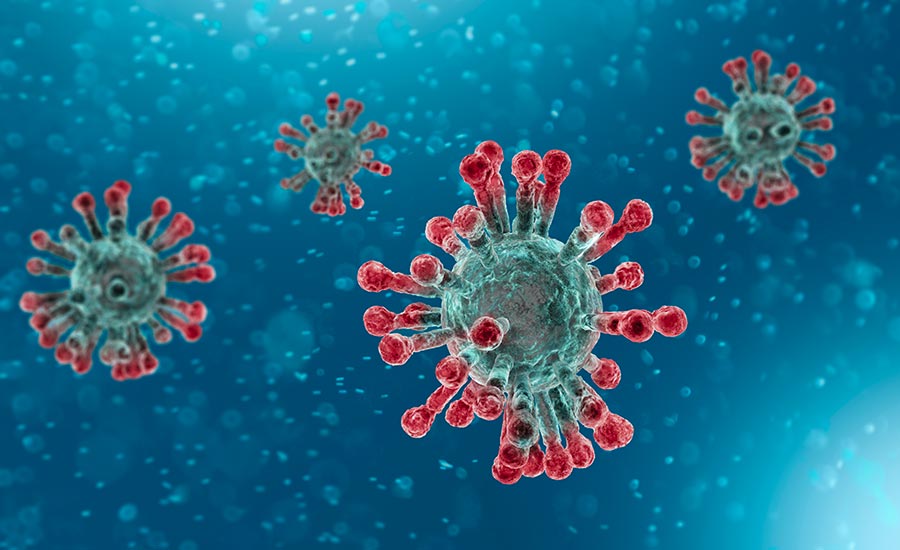
Virtually all governments, political leaders and medical communities are indicating a second wave of COVID-19 infection spread as being likely this fall. That’s essentially just over one month away (traditional respiratory illness or influenza season begins as early as September).
It’s sad enough that now about 1,000 people are self-isolating for 14 days in the lovely summer season through no fault of their own, but due to contact with someone (in their own household or workplace) who partied in various large gatherings in recent weeks from which cases of COVID-19 have emerged.
Imagine things getting even further out of control heading into September. Not only is the health of everyone potentially at heightened risk, but also businesses (the livelihood of families), and the whole rollout of back-to-school are effected upon which parents, students, businesses and communities are depending.
Holding out hope for a vaccine:

There is no way out to the other side of the pandemic without an effective treatment or vaccine against COVID-19. The earliest vaccine timeline is presently thought to be spring of 2021 at the earliest, given the time it takes to find or develop a vaccine methodology, to test it for safety and efficacy, then manufacture it in volume, then get it not only distributed to all regions but then administered to all Canadians.
From a public health perspective that is a massive undertaking upon which we all depend. It’s more likely we all must muddle through under present conditions (or worse) until the Fall of 2021.
What we depend on in the next few weeks and months is messaging by politicians and public health that truly hits home in the right way and at the right time, which is now.
==== About the writer:
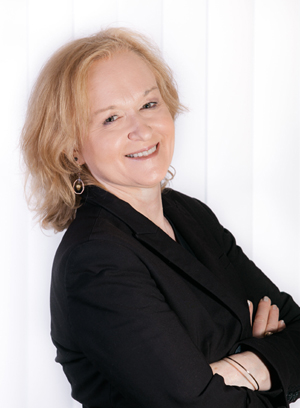
Mary Brooke, B.Sc., Cert PR has taken the socioeconomic approach to writing about communities, the economy and politics on south Vancouver Island and beyond for several decades. As editor of West Shore Voice News since 2014 (and before that MapleLine Magazine in 2008-2010 then Sooke Voice News in 2011-2014) she includes education and health as two key areas of focus that affect almost everyone on Vancouver Island. She has written many insight-pieces about the power of words, the differences between journalism, marketing and public relations, and how society thirsts for authentic and effective leadership.


